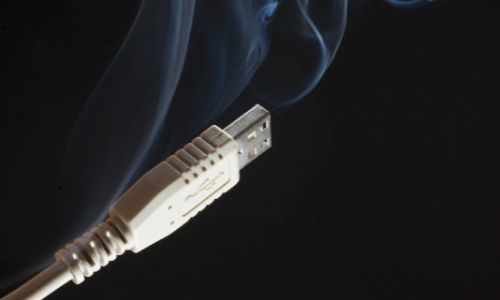Poor wiring maintenance and overuse of cables are just a few electrical hazards that can lead to accidental fires. To improve the safety of your home and office, get familiar with the most common causes of overheated cables. Knowing what causes your network’s cables to overheat will help prevent losing property to electrical mishaps.
A Faulty Outlet or Cables
Damaged hardware is much more susceptible to overheating than well-running equipment. Your outlets are much more likely to get really hot when in contact with a damaged cable, and a cable is likely to overheat when its interior structure is faulty. A faulty wire negatively impacts the electrical resistance between outlet and cable, causing one or both to overheat.
Contact With Moisture
Though moisture is known to typically cool things down, this isn’t the case with cabling. Moisture is a common cause of overheated cables because it causes them to short circuit. You should always keep your IT hardware in a dry location to avoid overheating due to moisture.
Wear and Tear
Corrosion is a natural process for most electrical equipment. The lifespan of your cords and outlets relies on how well you take care of them. If the answer to that is “poorly,” then they’re likely to corrode faster.
Corroded electrical conductors increase the electrical resistance of wires, which is a cause of overheating. Make sure to upkeep your cable and outlet maintenance and always replace your equipment when it starts to falter.
Overuse
Outlets have a limitation on how much electrical current can be drawn from them. If your electrical devices demand more electricity than the outlet can provide, this is bound to cause overheating.
Once you have an understanding of the most common causes of overheated cables, it’s important to adopt a few methods to avoid overheating your cabling to keep your infrastructure safe from electrical fire hazards. With the right equipment and maintenance, you’ll not only improve your cabling safety, but you’ll also enhance the lifespan of your hardware.








